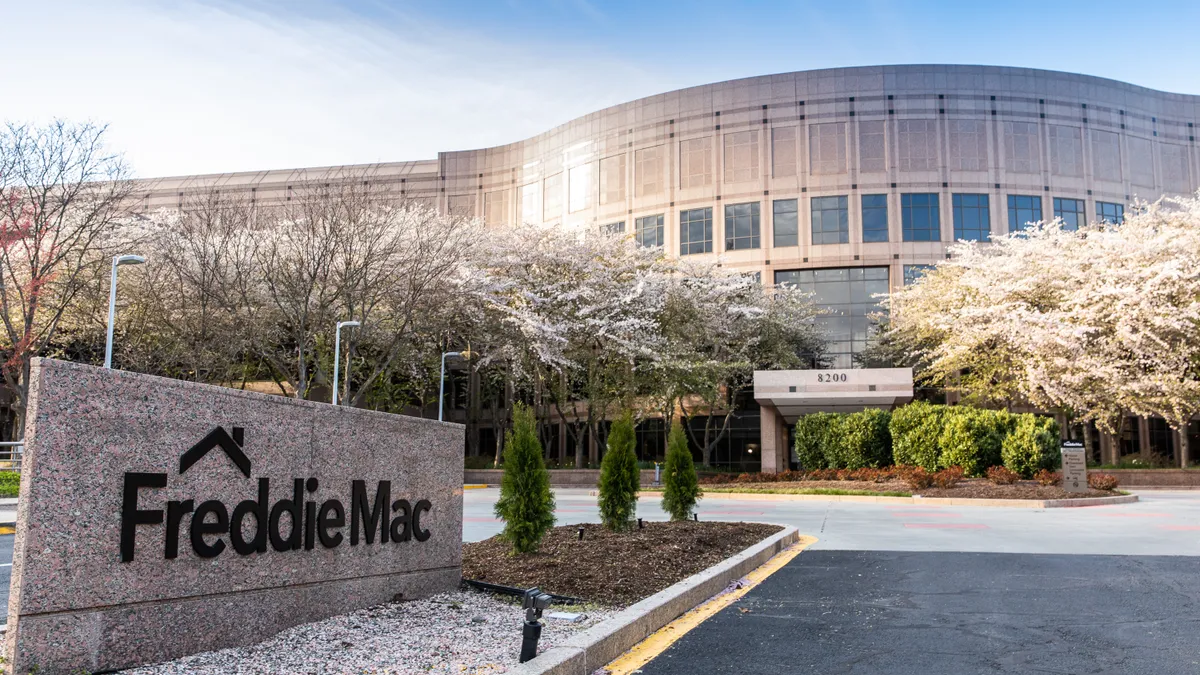Dive Brief:
- The Federal Housing Finance Agency has established lending caps of $88 billion each for Fannie Mae and Freddie Mac, allowing them to purchase a total of up to $176 billion in multifamily loans in 2026.
- Last year, FHFA established lending caps of $73 billion each for Fannie Mae and Freddie Mac, allowing them to purchase a total of up to $146 billion in multifamily loans in 2025. Industry insiders speculate that the agencies will hit their caps this year. In 2024, they were allotted $70 billion each, and in 2023, they were given $75 billion each.
- Similar to 2025, apartment loans that finance workforce housing will be excluded from next year’s limits. FHFA will continue to require that at least 50% of the government-sponsored enterprises’ multifamily businesses be mission-driven, affordable housing. All other mission-driven loans remain subject to the volume caps.
Dive Insight:
Just as in past years, FHFA will continue to monitor the multifamily mortgage market and maintain the ability to raise the caps further if necessary. However, if the actual size of next year’s market is determined to be smaller than was initially projected, the caps will not be lowered.
George Ratiu, the vice president of research at the National Apartment Association, said the FHFA’s decision should boost capital availability for the multifamily market.
“The FHFA announcement is welcome news for the rental housing industry, indicating an intensifying focus on housing affordability across the Trump administration, increased access to capital for buyers and owners looking to refinance and broader optimism about market conditions in 2026,” Ratiu said in emailed comments to Multifamily Dive.
Ratiu also said the decision to raise the caps should signal that 2026 will see higher multifamily lending activity than this year.
“In addition, the multifamily market is facing close to $90 billion in maturing debt in 2026, with a significant portion of that debt originated in a lower-rate environment [sub-5% rates],” Ratiu said. “The maturing debt is also held in larger share by banks, CMBS and non-bank lenders, which may be more conservative in 2026, positioning Fannie and Freddie as stronger alternatives for investors looking to refinance.”
Sharon Karaffa, president of multifamily debt and structured finance for New York City-based real estate services provider Newmark’s Multifamily Capital Markets Division, also expects the expanded FHFA production caps to position the GSEs to support the multifamily market.
“The higher limits enable Fannie Mae and Freddie Mac to address upcoming loan maturities, accommodate rising transaction volume, and deliver liquidity where it’s most needed,” Karaffa told Multifamily Dive.
Click here to sign up to receive multifamily and apartment news like this article in your inbox every weekday.













